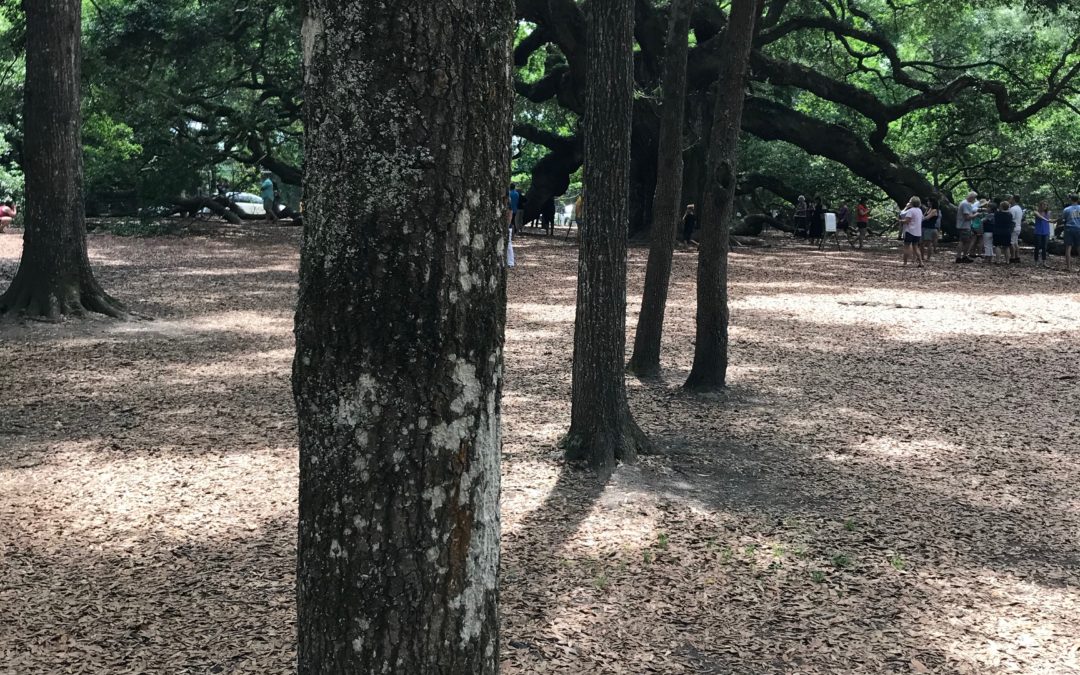My wife and I visited Charleston, SC, a couple weeks ago to celebrate our silver anniversary. I had never been to Charleston, but I did something I rarely do. Or, more accurately, I didn’t do something I usually do. I didn’t exhaustively research a travel destination.
Normally, I look into all the possibilities when I’m about to go to a new place, but this trip I/we simply took suggestions from others who have been or who live there. One recommendation kept coming up: Go see the Angel Oak Tree, a tree estimated to be in excess of 400-500 years old. The tree stands 66.5 ft tall, measures 28 ft in circumference, and from tip to tip its longest branch distance is 187 ft.
We went to see the tree on a sunny Sunday afternoon. It certainly is a natural marvel and there’s a feeling of peace that you don’t often experience at tourist attractions. After walking around the tree for a bit, we went to sit down on a bench and admire it from afar. My attention was soon drawn to the other trees that surround the Angel Oak, though. And that made me think of Ananias and his role in the conversion of Paul.
The conversion of Saul who later becomes Paul is one of the key moments in the history of the Christian faith for it is Paul who aggressively spreads the gospel far and wide in the early days of the Christian community and it is Paul who gives us so many books of the New Testament, including Romans, Galatians, and Philippians. But without Ananias, Saul may still be sitting around wondering what hit him.
Acts 9 tells the story of Saul’s conversion. On his way to Damascus, a light from heaven flashes around him and he loses his sight. “For three days he was without sight, and neither ate nor drank,” Acts 9:9 says.
We are introduced to Ananias in verse 10: “Now there was a disciple in Damascus names Ananias. The Lord said to him in a vision, ‘Ananias.’ He answered, ‘Here I am, Lord.'” The Lord gives Ananias a task: Go to a particular house on a particular street and look for Saul. Lay your hands on him so that he might see again. Understandably, Ananias is hesitant because Saul’s reputation as a persecutor of Christians precedes him. But the Lord insists and Ananias goes.
He finds Saul, lays his hands on him, and Saul’s sight is restored. He is immediately baptized and the story then continues from Saul’s point of view. Ananias fades into the background.
Our collective attention tends to be drawn to the big, noteworthy, and productive. But not at the expense of those on the periphery who still do important ministry. The trees alongside the Angel Tree are still beautiful. The small act of obedience by Ananias still made a difference.
Not every kindness we share will be known by multitudes or shared online. But each one still matters.

